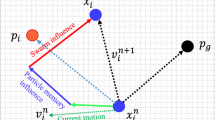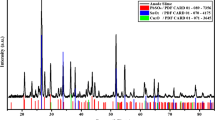Abstract
The kinetic study of valuable metals recovery from waste lithium-ion batteries (LIBs) using the artificial neural network (ANN) was investigated. A multilayer feed-forward artificial neural network with back-propagation learning algorithm was used for kinetic analysis of Co, Mn, Ni, and Li leaching from waste LIBs using H2SO4 in the presence of H2O2. Required data for ANNs learning were generated using various random combinations of kinetic parameters in their extended ranges (i.e., activation energy and Arrhenius equation constant) as well as the most common solid–liquid reaction model. The predictive accuracy of the model was comparable with the correlation coefficient of the model fitting method (R2). Results showed that the model developed in this study can be a useful tool in accurately predicting the kinetics of leaching reactions. The activation energy of Co, Mn, Ni, and Li recovery from waste LIBs using the proposed method calculated to be 40.83, 43.35, 39.06, and 27.30 kJmol−1, respectively, and leaching reaction for metals found to follow the surface chemical reaction model.

This figure is reproduced with permission from [42], Copyright Elsevier (2016)










Similar content being viewed by others
Change history
08 December 2022
A Correction to this paper has been published: https://doi.org/10.1007/s10163-022-01555-x
References
Dorella G, Mansur MB (2007) A study of the separation of cobalt from spent Li-ion battery residues. J Power Sources 170:210–215
Zhang P, Yokoyama T, Itabashi O et al (1998) Hydrometallurgical process for recovery of metal values from spent lithium-ion secondary secondary batteries. Hydrometallurgy 47:259–271
Zhang X, Xie Y, Lin X (2013) An overview on the processes and technologies for recycling cathodic active materials from spent lithium-ion batteries. J Mater Cycles Waste Manag 15:420–430
Pant D, Dolker T (2017) Green and facile method for the recovery of spent Lithium Nickel Manganese Cobalt Oxide (NMC) based Lithium ion batteries. Waste Manag 60:689–695
Honório KM, De Lima EF, Quiles MG et al (2010) Artificial neural networks and the study of the psychoactivity of cannabinoid compounds. Chem Biol Drug Des 75:632–640
Marini F, Bucci R, Magrì AL, Magrì AD (2008) Artificial neural networks in chemometrics: history, examples and perspectives. Microchem J 88:178–185
Taylor P, Kundu P, Debsarkar A et al (2014) Artificial neural network modelling in biological removal of organic carbon and nitrogen for the treatment of slaughterhouse wastewater in a batch reactor. Environ Technol 35:1296–1306
Khataee A, Fathinia M, Rad TS (2016) Kinetic modeling of nalidixic acid degradation by clinoptilolite nanorod-catalyzed ozonation process. RSC Adv 6:44371–44382
Thakur V, Ramesh A (2018) Analyzing composition and generation rates of biomedical waste in selected hospitals of Uttarakhand, India. J Mater Cycles Waste Manag 20:877–890
Galván IM, Zaldívar JM, Hernández H, Molga E (1996) The use of neural networks for fitting complex kinetic data. Comput Chem Eng 20:1451–1465
Normandin A, Grandjean BPA, Thibault J (1993) PVT data analysis using neural network models. Ind Eng Chem Res 32:970–975
Aldrich C, Deventer JSJVAN, Reuteri MA (1994) The application of neural nets in the metallurgical industry. Miner Eng 7:793–809
Perpetuo EA, Silva DN, Avanzi IR et al (2012) Phenol biodegradation by a microbial consortium: application of artificial neural network (ANN) modelling. Environ Technol 33:1739–1745
Yang M, Wei H (2006) Application of a neural network for the prediction of crystallization kinetics. Ind Eng Chem Res 45:70–75
Kumar KV, Martins P, Rocha F (2008) Modelling of the batch sucrose crystallization kinetics using artificial neural networks: comparison with conventional regression analysis. Ind Eng Chem Res 47:4917–4923
Jorjani E, Bagherieh AH, Mesroghli S, Chehreh Chelgani S (2008) Prediction of yttrium, lanthanum, cerium, and neodymium leaching recovery from apatite concentrate using artificial neural networks. J Univ Sci Technol Beij Miner Metal Mater 15:367–374
Li R, Yuan T, Fan W et al (2014) Recovery of indium by acid leaching waste ITO target based on neural network. Trans Nonferrous Metals Soc China 24:257–262
Valeh-e-sheyda P, Yaripour F, Moradi G, Saber M (2010) Application of artificial neural networks for estimation of the reaction rate in methanol dehydration. Ind Eng Chem Res 49:4620–4626
González-Hernández JL, Canedo MM, Encinar S (2013) Combining artificial neural networks and experimental design to prediction of kinetic rate constants. J Math Chem 51:1634–1653
Salmi T, Grénman H, Wärnå J, Murzin DY (2013) New modelling approach to liquid-solid reaction kinetics: from ideal particles to real particles. Chem Eng Res Des 91:1876–1889
Li L, Zhai L, Zhang X et al (2014) Recovery of valuable metals from spent lithium-ion batteries by ultrasonic-assisted leaching process. J Power Sources 262:380–385
Badawy SM, Nayl AA, El Khashab RA, El-Khateeb MA (2014) Cobalt separation from waste mobile phone batteries using selective precipitation and chelating resin. J Mater Cycles Waste Manag 16:739–746
Jha MK, Kumari A, Jha AK et al (2013) Recovery of lithium and cobalt from waste lithium ion batteries of mobile phone. Waste Manag 33:1890–1897
Dickinson CF, Heal GR (1999) Solid–liquid diffusion controlled rate equations. Thermochim Acta 340–341:89–103
Grenman H, Salmi T, Murzin DY (2011) Solid-liquid reaction kinetics: experimental aspects and model development. Rev Chem Eng 27:53–77
Rojas R (1996) Neural Networks: a systematic introduction, 1st edn. Springer, New York
Fahlman SE (1988) An empirical study of learning speed in backpropagation networks. In: Technical Report CMU-CS-88-162, Carnegie-Mellon Univ
Haykin S (2009) Neural networks and learning machines, 3rd edn. Pearson International, New Jersey
Gasteiger BJ, Zupan J (1993) Neural networks in chemistry. Angew Chem Int Ed Engl 32:503–527
Takacova Z, Havlik T, Kukurugya F, Orac D (2016) Cobalt and lithium recovery from active mass of spent Li-ion batteries: Theoretical and experimental approach. Hydrometallurgy 163:9–17
He LP, Sun SY, Song XF, Yu JG (2017) Leaching process for recovering valuable metals from the LiNi1/3Co1/3Mn1/3O2 cathode of lithium-ion batteries. Waste Manag 64:171–181
Vajda S, Rabitz H (1994) Identifiability and distinguishability of general reaction systems. J Phys Chem 98:5265–5271
Meshram P, Pandey BD, Mankhand TR (2015) Recovery of valuable metals from cathodic active material of spent lithium ion batteries: Leaching and kinetic aspects. Waste Manag 45:306–311
Zheng X, Gao W, Zhang X et al (2017) Spent lithium-ion battery recycling—reductive ammonia leaching of metals from cathode scrap by sodium sulphite. Waste Manag 60:680–688
Li L, Bian Y, Zhang X et al (2018) Process for recycling mixed-cathode materials from spent lithium-ion batteries and kinetics of leaching. Waste Manag 71:362–371
Meshram P, Pandey BD, Mankhand TR (2015) Hydrometallurgical processing of spent lithium ion batteries (LIBs) in the presence of a reducing agent with emphasis on kinetics of leaching. Chem Eng J 281:418–427
Libraries T (2017) Sustainable recovery of cathode materials from spent lithium-ion batteries using lactic acid leaching system. ACS Sustain Chem Eng 5:5224–5233
Willey JD (2004) The effect of ionic strength on the solubility of an electrolyte. J Chem Educ 81:1644–1646
Espiari S, Rashchi F, Sadrnezhaad SK (2006) Hydrometallurgical treatment of tailings with high zinc content. Hydrometallurgy 82:54–62
Ray HS (1993) Kinetics of metallurgical reactions. Oxford and IBH Publishing, New Delhi
Whittingham MS (2004) Lithium batteries and cathode materials. Chem Rev 104:4271–4302
Muravyev NV, Pivkina AN (2016) New concept of thermokinetic analysis with artificial neural networks. Thermochim Acta 637:69–73
Author information
Authors and Affiliations
Corresponding author
Appendix
Appendix
The present example illustrates how to calculate the activation energy and the reaction mechanism using input and output data with ANN models #1 and #2, respectively. Input variables 1–35 are the reaction fraction values for the reaction times 10, 15, …, 80 min in the corresponding temperature of 25, 35, …, 60 °C. Simulated reaction model with ANN#2 is the M3 type (Table 1).
Input 1 | Input 2 | Input 3 | Input 4 | Input 5 | Input 6 | Input 7 | Input 8 |
|---|---|---|---|---|---|---|---|
0.0370 | 0.0774 | 0.1047 | 0.1386 | 0.1808 | 0.0648 | 0.0949 | 0.1505 |
Input 9 | Input 10 | Input 11 | Input 12 | Input 13 | Input 14 | Input 15 | Input 16 |
0.1967 | 0.2459 | 0.0972 | 0.1191 | 0.1990 | 0.2807 | 0.3684 | 0.1644 |
Input 17 | Input 18 | Input 19 | Input 20 | Input 21 | Input 22 | Input 23 | Input 24 |
0.2057 | 0.2654 | 0.3815 | 0.4506 | 0.1923 | 0.3185 | 0.3966 | 0.5088 |
Input 25 | Input 26 | Input 27 | Input 28 | Input 29 | Input 30 | Input 31 | Input 32 |
0.5882 | 0.2632 | 0.4178 | 0.5815 | 0.6856 | 0.7117 | 0.3347 | 0.6938 |
Input 33 | Input 34 | Input 35 | |||||
0.7185 | 0.7210 | 0.7392 |
The output of the ANN model #2 shows that reaction type is third in the following row (Table 1: M1, M2, M3, …, M11, M12), i.e., the model corresponding to the output 3: two-third-order kinetics (shrinking core with chemical reaction-controlled process).
Output 1 | Output 2 | Output 3 | Output 4 | Output 5 | Output 6 | Output 7 | Output 8 | Output 9 | Output 10 | Output 11 | Output 12 |
|---|---|---|---|---|---|---|---|---|---|---|---|
0.000057 | 0.000088 | 0.984007 | 0.000006 | 0.000000 | 0.000000 | 0.000004 | 0.000000 | 0.000000 | 0.000001 | 0.000000 | 0.000017 |
The numerical values of the other models output are zero or close to zero and are not chosen as the correct reaction model. This result can be confirmed further using the complementary analyzes. However, by developing the ANN kinetic analysis method for multi-stage reactions, one can probably determine the contribution of each model to the overall reaction mechanism.
The ANN model #1 calculated activation energy value is:
Output 1 | |
|---|---|
40,8260 |
Rights and permissions
About this article
Cite this article
Ebrahimzade, H., Khayati, G.R. & Schaffie, M. Leaching kinetics of valuable metals from waste Li-ion batteries using neural network approach. J Mater Cycles Waste Manag 20, 2117–2129 (2018). https://doi.org/10.1007/s10163-018-0766-x
Received:
Accepted:
Published:
Issue Date:
DOI: https://doi.org/10.1007/s10163-018-0766-x




